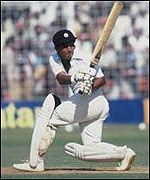 Three discrete pieces of news, and they make for interesting reading. Hema Malini signs a contract as brand ambassador for Hakoba. Sachin signs a contract with Canon, for a fee that remains “undisclosed”. Saurav Ganguly scores a century.
Three discrete pieces of news, and they make for interesting reading. Hema Malini signs a contract as brand ambassador for Hakoba. Sachin signs a contract with Canon, for a fee that remains “undisclosed”. Saurav Ganguly scores a century.In Hema Malini’s case, her contract is part of a double contract; her daughter Isha (correction: Esha is how it's spelt, I'm informed) is part of the deal. That’s one way to stretch your celeb career – tie it up with a younger, more successful celeb.
In Sachin’s case, Iconix and World Sports Group are looking at new geographies to extend Sachin’s status as a brand ambassador, even as Indian brands are rethinking using him (Airtel, one of Sachin’s “original” contractees, did not renew his contract).
In Saurav’s case, he neither has a younger “partner” to tag on to, nor can he look at tapping the international market” and he’s trying to extend his celeb career by the oldest solution in the book: performance.
So what’s the point of this post?
The inability of Indian celebs to plan a life and career out of post celebrity-dom. Of all the stars that India produces, be it in Bollywood or in cricket, very few have managed to plan for their lives beyond the life of their professional careers. For example, even a Sunil Gavaskar or Mohd. Azharuddin is rarely seen as a brand ambassador. Other than Amitabh Bachchan (who is a “live” Bollywood star), where are the stars of yesterday seen in TV commercials?
Where does the problem lie? With the stars themselves that they have allowed their brand equity to die?
Or with the advertising industry, that they are not able to find ways to cash in on the brand equity of the stars of yesteryear?
It’s worth thinking about. Stars of the past will cost a brand much less than will current stars. And a number of them will evoke memories, will connect, and will deliver for the brand.
4 comments:
best site
best site
best site
best site
Post a Comment